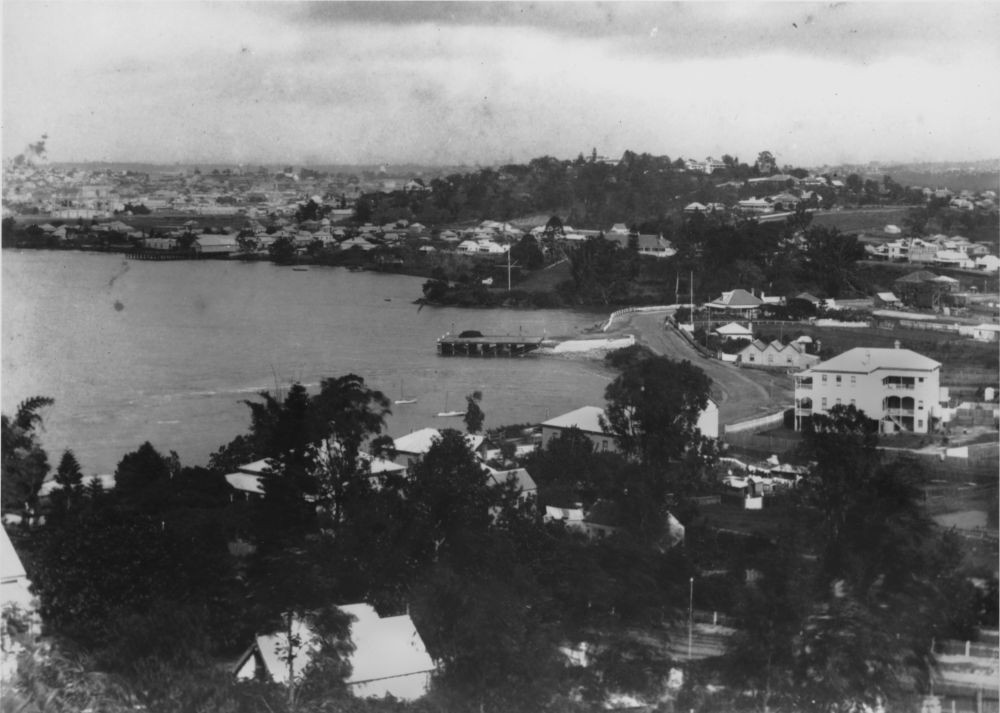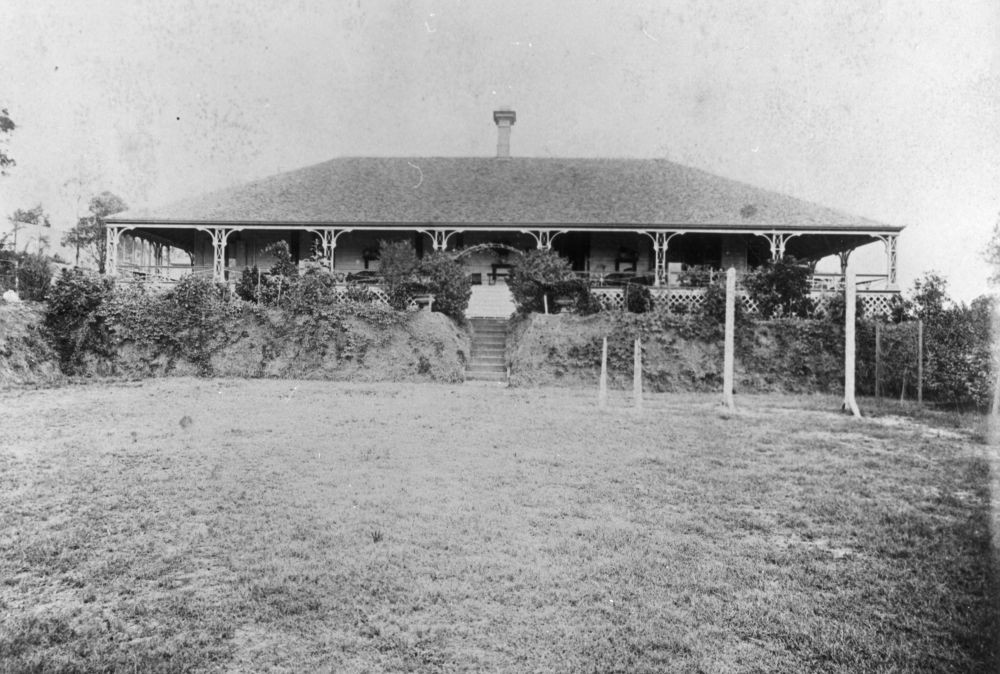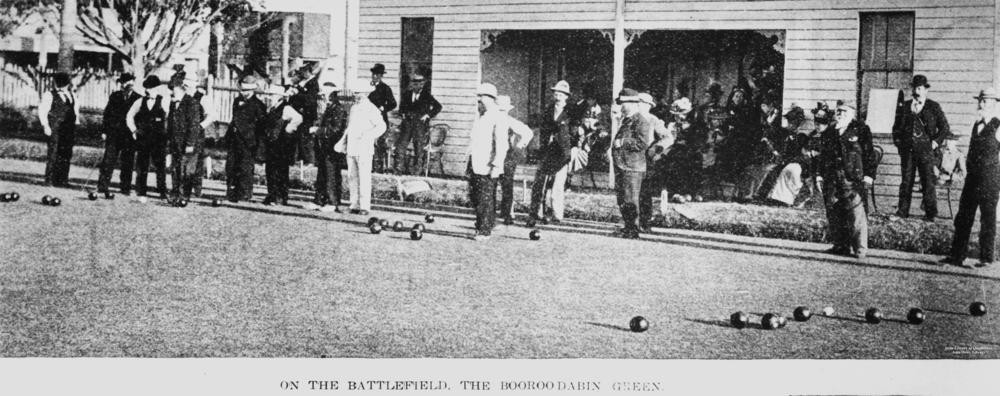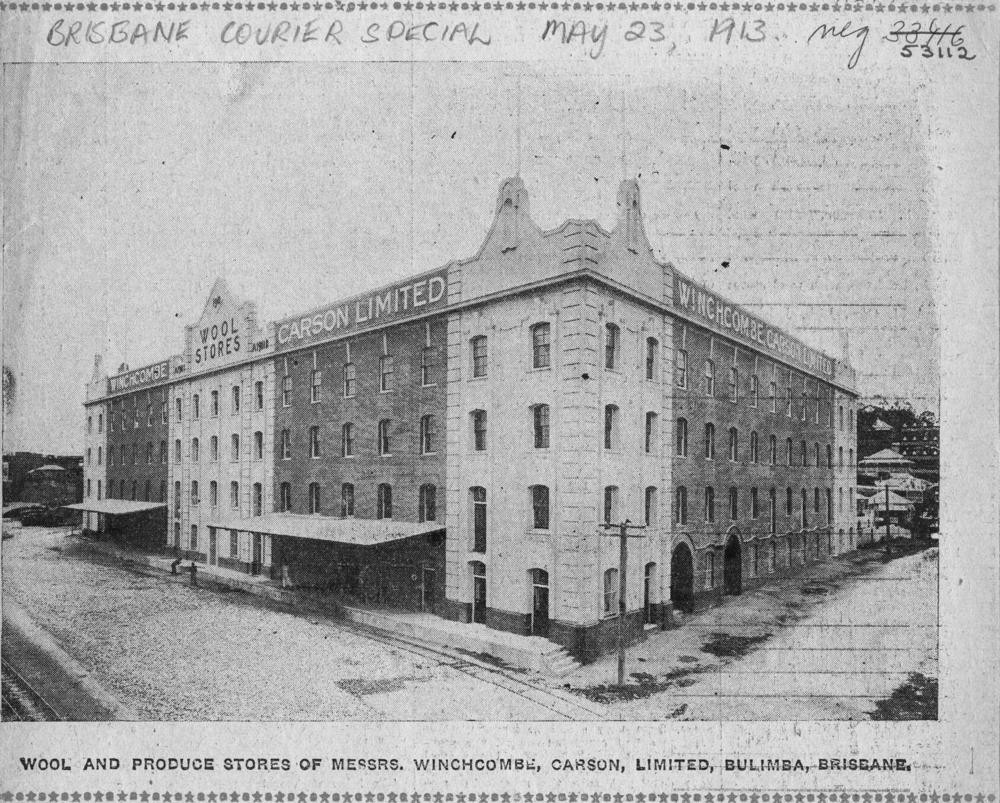The name of this suburb may derive from a number of sources. The word is said to be a Scottish term meaning a new place or a new house. It is also recorded that the name is based on Newstead Abbey located in Nottinghamshire in England.
The southern section of Newstead comprises the locality of Teneriffe. Another locality within Newstead is Booroodabin, with the named said to be based on an Aboriginal word meaning a place of oaks.

View of Newstead, ca. 1890. Image 67710
Some early settlers and businesses in the Newstead area include:
- James Gibbon, a property speculator, apparently known as “Street Corner Jimmy”, purchased a large tract of land on Teneriffe Hill (1850). He named his property Teneriffe after one of the Canary Islands and the mountain located on this island.
- Captain John Wickham, the first police magistrate and government resident for the Moreton Bay District. Wickham was the commander of the Beagle upon which Charles Darwin had sailed.
- George Harris, shipping, stock and station agent and storekeepers. The Harris family later resided in Newstead House.
- wool was a major export through the network of wharves that were developed in the Newstead area. The first wool store to be established was Dalgety’s, which opened in 1911 and was destroyed by fire in 1984.
- by the 1880s most of the early landholders were starting to sub-divide their properties.
- river based industries were developed from an early period, including boat building, boat maintenance and wharfage. The on-going dredging of the Brisbane river maintained navigability for larger vessels.
- boat building sheds.
- ice works and cold stores.
- petrol/gas storage.
- William Perry was a prominent member of the Queensland Legislative Council. The Perry family residence was called Folkstone which is commemorated in the name of Folkstone Street.

Lawns and gardens of Folkstone. Breakfast Creek, 1885. John Oxley Library, State Library of Queensland. Image 41586
The housing estates which developed in the early period of the suburb's history included:
-
- Green Meadows Estate (1870s) comprising 16 perch allotments located near the Brisbane River.
- Newstead Estate (1870s) comprising the area surrounding Newstead House.
- Teneriffe Estate (1870s).
- Breakfast Creek Estate (1884).
- 1912 – Perry Estate (1912) comprising housing allotments sub-divided from the Perry Family's estate.
-
- Newstead House which dates from 1846. Newstead House is acknowledged as
Brisbane’s oldest surviving residence. The house was built by Patrick Leslie who had settled on the Darling Downs in 1840 and who named the original cottage Newstead after Newstead Abbey in England. The house has evolved from the original cottage into the grand residence we see today. The Leslie family only lived in the house for a year before it was sold to Captain John Wickham, the first police magistrate and government resident for the Moreton Bay District. He was also Patrick Leslie’s brother-in-law. In 1939, the Queensland Government enacted the Newstead House Trust which was the first legislation in Queensland to preserve an historic structure. - Booroodabin Bowls Club, Queensland’s oldest bowls club. It was originally called the Breakfast Creek Bowls Club.
- Newstead House which dates from 1846. Newstead House is acknowledged as

Booroodabin Bowling Club at Newstead, Brisbane, 1899. John Oxley Library, State Library of Queensland. Image 12027
- Roseville, dating from the 1880 and located in Chester Street. The house was constructed for James Colishaw. A later owner, James Mortimer gave the house the name Roseville.
- Albion Park, previously known as the Breakfast Creek Sports Ground. The park comprised a cycle track, cricket oval, football fields and a lake for swimming and boating.
- Perry Park, developed in 1913 on land acquired from the estate of William Perry.
- Cameron Rocks. The Cameron family lived in Toorak Road. Mr Cameron was a prominent financier, naturalist, yachtsman and fisherman.
- wool and general stores.
- William Houghton & Co.
- Wilcox Mofflin Ltd.
- Fenwick & Co.
- Queensland Primary Producers Cooperative.
- New Zealand and Mercantile Agency Limited.
- Winchcombe Carson Limited.
- Dalgety’s Wool and Grain Stores (1906).

Winchcombe Carson Limited woolstores in Teneriffe, Brisbane, 1913. John Oxley Library, State Library of Queensland. Image 53112
Some important dates in Newstead's history and development include:
- 1836 – the first bridge across Breakfast Creek was constructed.
- 1848 – the first road bridge was built across Breakfast Creek. This structure collapsed 1856 and was replaced by a punt for 2 years, whilst a replacement bridge was constructed.
- 1857 – Holy Trinity Anglican Church established.
- 1861 – the Fortitude Valley State School established.
- 1867 – the Fortitude Valley State School moved to a purpose-built school in Brookes Street.
- 1885 – the first trams run to Breakfast Creek.
- 1885 – the Breakfast Creek Rowing Club was established.
- 1888 – a replacement road bridge was built across Breakfast Creek.
- 1890 – the Breakfast Creek State School was opened.
- 1913 – Edward Eager launched his American Motor Business at Newstead.
- 1914 – Our Lady of Victories Catholic Church was established. This church was built on a site acquired from the estate of William Perry and became the church for the newly established Bowen Hills Parish.
- 1956 – the present Breakfast Creek Bridge was constructed. This bridge has been subsequently widened and renovated.
Comments
Your email address will not be published.
We welcome relevant, respectful comments.